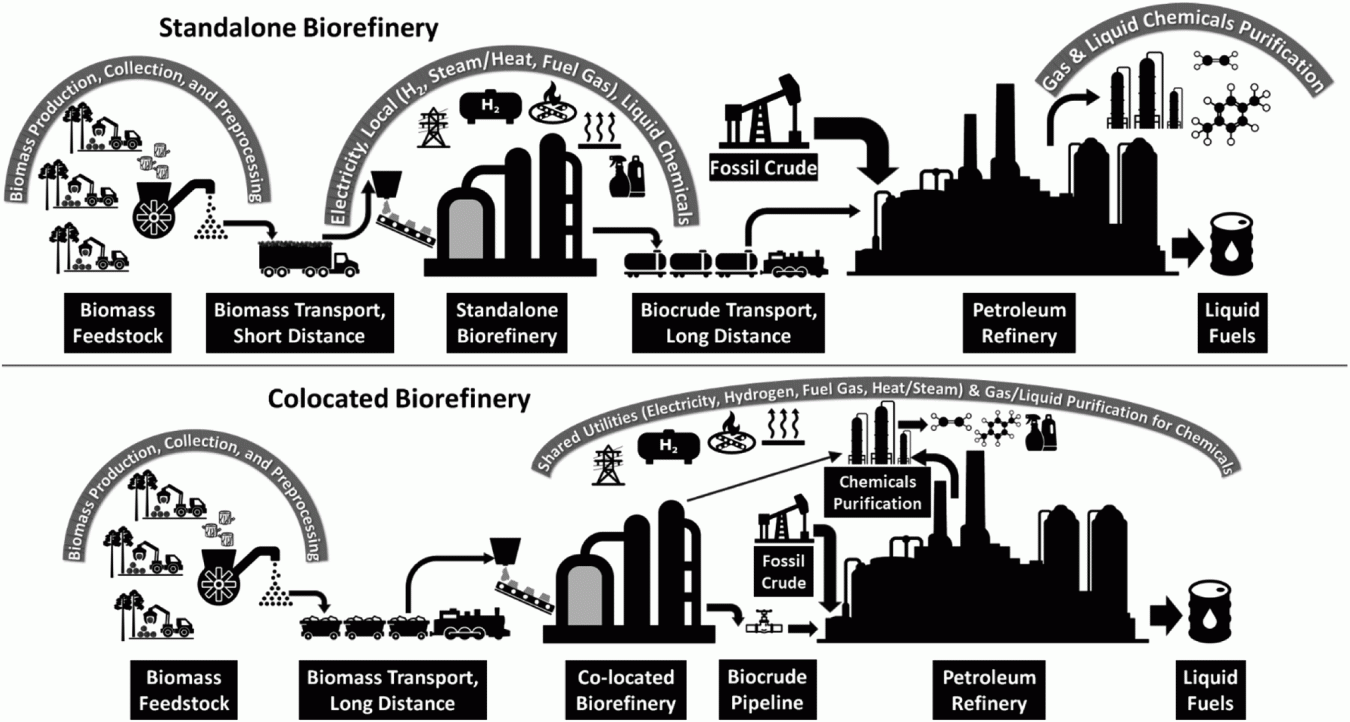As seen in two U.S. Department of Energy Bioenergy Technologies Office-funded NREL studies, techno-economic analysis (TEA) and life cycle assessment (LCA) can be powerful tools to help stakeholders realize the best fiscal and environmental returns.
June 3, 2024Dr. Zia Abdullah

Dr. Zia Abdullah is laboratory program manager for the National Renewable Energy Laboratory’s (NREL’s) Bioenergy Technologies Office program.
Zia has extensive experience and accomplishments in thermochemically and biochemically converting biomass to fuels and chemicals. His experience includes more than 25 years of industrial research and development in biomass conversion, as well as problem solving, new product development, business development, and project management.
Prior to joining NREL, Zia was chief technology officer at Versa Renewables LLC, where he developed and commercialized biomass pyrolysis and biopolyol technologies. Before Versa, Zia served as one of the Battelle Memorial Institute’s 11 fellows, leading the development of technology and commercial application for fuels, chemicals, and materials from the thermochemical and biochemical conversion of biomass. Prior to working at Battelle, Zia was a research advisor (fellow) at Weyerhaeuser Company, where he worked on challenges related to manufacturing and biomass valorization.
Meet our other bloggers ►
Return to Bioprose blog ►
As Illustrated by Two National Renewable Energy Laboratory (NREL) Studies, Careful Planning and Creative Biomass Sourcing Can Yield Big Advantages
Companies must negotiate a host of factors when moving biofuel technologies from the lab to the real world—where to build facilities; how to source biomass in the near- and long-term; how to optimize industrial processes; how to ferry materials and fuels between facilities and markets; and much more. Small adjustments to any of these considerations can quickly change the cost of doing business or even diminish the sustainability of a fuel or product. These adjustments directly impact the price of producing a gallon of fuel or inflate net carbon emissions of making and using it.
With so many options at play, how can companies, agencies, and community planners make the best decisions on new bioenergy ventures?
As seen in two U.S. Department of Energy Bioenergy Technologies Office-funded NREL studies, techno-economic analysis (TEA) and life cycle assessment (LCA) can be powerful tools to help stakeholders realize the best fiscal and environmental returns.
Waste not, Wastewater: How to Collect Algal Biomass on the Cheap
Algae may be slimy, stringy, or stinky, they are a versatile class of organisms packed with compounds for making biofuel or bioproducts. Still, the business case for algae biofuels has been complicated. Today, one ton of algal biomass costs up to 9 times more than a ton of lignocellulosic biomass on a dry ton basis. Large-scale algae farms can require hundreds of millions of dollars in investments to produce and harvest algae at commercial scale, but NREL researchers are making great strides in helping lower the cost.

Cost largely depends on the source of algae. According to an NREL TEA summarized in a recent technical report, collecting waste algae from localized, small-scale sources could result in surprisingly attractive, low- to no-cost feedstocks. That could serve as a near-term option for getting an algal industry off the ground without the need for multi-million-dollar dedicated algae farms.
- Sourcing algae biomass for free—or less—from wastewater treatment plants: Algae are avid consumers of nitrogen and phosphorous, and are pollutants routinely filtered at wastewater treatment plants. Some facilities are considering replacing cost- and energy-intensive processes with algae to help treat wastewater. The NREL analysis found that moderately-sized facilities could pay other users to haul the leftover biomass away—offering as much as $341 per ton while remaining economical. Having served its water treatment purpose while potentially saving on costs for conventional water treatment technologies, algae could yield a second useful life as an ingredient for making fuel or products.
- Skimming harmful algae blooms off waterways: Harmful algae blooms occur when colonies of single-celled algae take over waterbodies and release toxins as they decompose. According to the NREL study, those algae blooms—a public health concern in many communities—could become cheap sources of biomass. In fact, if local governments offered credits to treat algae blooms, companies could collect and sell the resulting biomass for as low as $21 per ton—cheap enough for biofuel facilities to make a profit on environmentally friendly fuels and products.
Location, Location, Location: How to Lower Biocrude Emissions
Biocrude may look like crude oil—a black, viscous liquid—but the similarities of the plant-derived oil largely stop there. Biocrude can be made by breaking down biomass with heat in special reactors—including a process known as catalytic fast pyrolysis. Because plants absorb carbon dioxide as they grow, turning plant biomass into biocrude (and later fuel) means far fewer net greenhouse gas (GHG) emissions make it into the atmosphere.
Companies are on the lookout for ways to make biocrude production cleaner and cheaper, such as co-processing biocrude at existing refineries. But companies have a menu of strategies for producing or sourcing their sustainable biocrude to make their processes even more efficient.
According to a recent NREL analysis in Sustainable Energy & Fuels, where companies produce biocrude matters. In fact, building biocrude facilities next to existing refineries—instead of closer to biomass sources—can lower GHG emissions by as much as 150% depending on the exact infrastructure design. That is a striking reduction in emissions, and the researchers detail how industry engineers might achieve it with smart designs that let the facilities share infrastructure. By doing so, they can prevent biomass carbon and energy from going to waste.

First, companies must strategically use or sell energy byproducts created when making biocrude, like heat and steam. Neighboring refineries can offer infrastructure to transport and use these products. For example, facilities can use steam and heat locally for refinery processes, replacing fossil fuels.
Companies can also collect low-emission hydrogen released during the process of converting biomass into biocrude. When refineries are next door, no hydrogen trucks or extensive pipelines are needed to move it around—it can be used right on site.
Together, small design steps like these can yield big savings in energy—and subsequently much lower emissions.
Of course, analyses require assumptions. As the researchers note in their paper, the “benefits of using excess energy resources…can be leveraged only with the availability of local consumers and infrastructure.” In other words, simply building a biocrude facility next to a refinery isn’t enough; companies need to make smart design decisions and build strong relationships with other industrial partners, communities, and customers, too. They need to carefully consider local, state, and federal regulations so they can account for and get credit for these sustainability benefits.
Dr. Zia Abdullah is laboratory program manager for the National Renewable Energy Laboratory’s (NREL’s) Bioenergy Technologies Office program.

